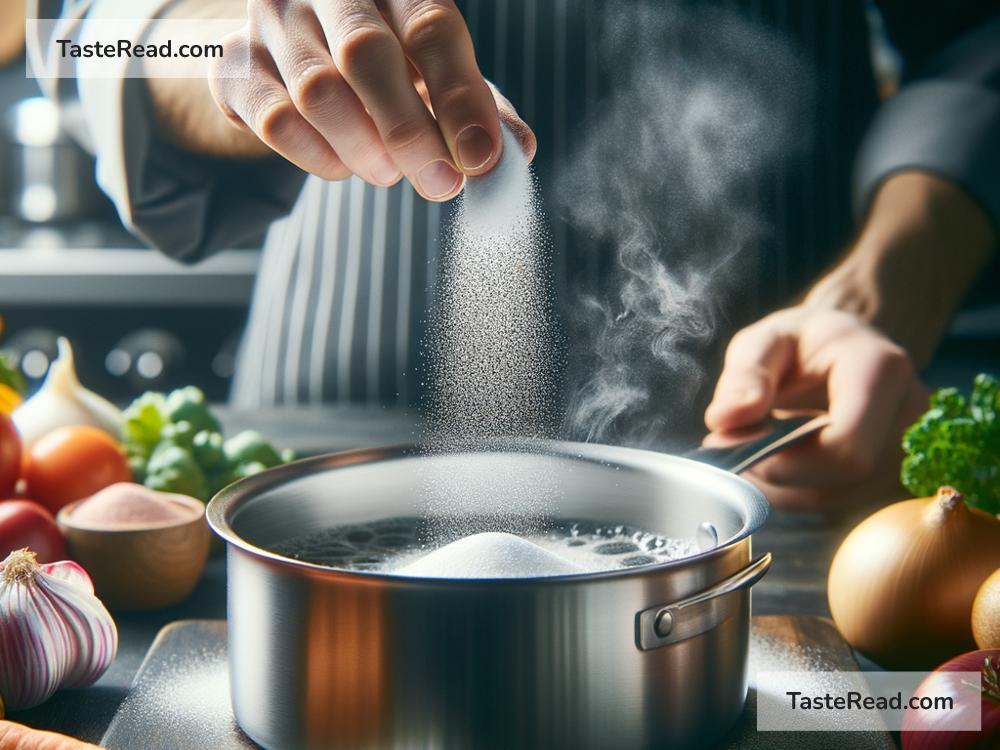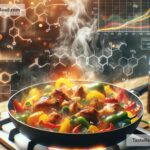The Science of Cooking with Chemical Intrepidity: Techniques and Tips
Cooking might seem like a daily routine, but it’s also a form of science. Every time you sauté, bake, grill, or boil, there’s an exciting world of chemistry happening in your kitchen. Understanding the science behind cooking can help you improve your techniques, get more creative, and seriously level up your meals. So today, let’s explore cooking with “chemical intrepidity”—a fancy way of saying we’re diving boldly into the chemistry of food.
The Science of Cooking: Why Chemistry Matters
Food is made of molecules—proteins, fats, carbohydrates, water, and minerals. When we cook, we’re manipulating those molecules using heat, pressure, and reactions with other ingredients. Cooking isn’t just about following recipes; it’s about creating chemical reactions that transform ingredients into delicious meals.
The beauty of cooking lies in understanding how these molecules behave and finding ways to bring out the best flavors, textures, and aromas. By approaching cooking with a curious and scientific mindset, you can experiment confidently in your kitchen and let your inner scientist shine.
Key Chemistry Concepts in Cooking
Let’s break cooking down into some basic chemistry principles that everyone can understand.
1. Heat and the Maillard Reaction
Heat is a major player in cooking, and one of the coolest chemical reactions it triggers is the Maillard reaction. This reaction happens when proteins and sugars meet under high heat, creating browning in foods and delivering deep, complex flavors. Think about the crust on a steak, the golden-brown edges of cookies, or the caramelized surface of roasted vegetables—this is all thanks to the Maillard reaction.
- Tip: To get the Maillard reaction going, pat meat or vegetables dry before cooking. Moisture prevents browning, so you need dry heat to create those flavor-packed golden layers.
2. Emulsification: Making Oil and Water Mix
Have you ever wondered how mayonnaise or salad dressings magically blend oil and water? On their own, oil and water don’t mix, but with emulsification—a chemistry trick—they can come together beautifully. Emulsifiers, like egg yolks (rich in lecithin), act like mediators, holding the oil and water molecules together.
- Tip: When making an emulsified sauce, add the oil slowly and whisk vigorously to ensure the molecules bind properly.
3. The Role of Acids in Cooking
Acids like vinegar, lemon juice, and buttermilk aren’t just there to add tangy flavors—they impact the chemistry of your food. Acids can tenderize meat, preserve fruits, and brighten flavors in dishes. In baking, acidic ingredients react with baking soda to release carbon dioxide gas, creating air bubbles in your cake or bread.
- Tip: Use a squeeze of lemon or a splash of vinegar to brighten soups, sauces, or dressings and add depth to the flavor.
4. Gelatinization: The Science of Starch
Starch is a carbohydrate found in foods like rice, potatoes, and flour. When you heat starch with water, it absorbs the liquid and balloons up, creating a gel-like texture. This process, called gelatinization, thickens soups, sauces, and stews.
- Tip: For thickening soups or sauces evenly, mix a few tablespoons of flour or cornstarch with cold water to create a slurry, then gradually add it to the dish while stirring.
5. Fermentation: The Live Kitchen Lab
Fermentation is pure food science and has been used for thousands of years to create bread, yogurt, cheese, beer, and pickles. Tiny microorganisms like yeast and bacteria feed on sugar in food, converting it into alcohol, carbon dioxide, or acids—and adding amazing flavors.
- Tip: If you want to try fermentation, start with something simple like homemade yogurt or pickles. It’s a fun and rewarding experiment!
6. The Role of Proteins: Cooking Meat and Eggs
Proteins behave interestingly when heated. They “denature,” meaning their structure changes, causing them to firm up (like eggs cooking) or get tender (like slow-cooked meat). Cook them gently to control the texture!
- Tip: Use lower heat for delicate proteins like fish or eggs to avoid overcooking, and marinate meats for tenderness before grilling or roasting.
Experiment and Play in the Kitchen
Cooking with chemical intrepidity means being brave enough to experiment. Science doesn’t have to feel intimidating—think of your kitchen as your personal lab, where you can test different ideas and tweak recipes to see what happens. Here are some ways to be bold and scientific in the kitchen:
-
Play with Temperatures: Try cooking meat at low heat over a longer period (slow cooking) versus high heat (grilling). Notice how the texture and flavor change.
-
Mix Flavors: Experiment with acids, salts, and spices. For example, pair sweetness with a splash of vinegar or bitterness with a bit of salt.
-
Get Creative: Make a batch of cookies and try using different fats—like butter versus vegetable oil—or tweak sugar levels to explore the impact on texture and flavor.
-
Test Substitutions: What happens when you swap out ingredients? Replace buttermilk with yogurt, or try using almond flour instead of regular flour in a recipe.
Chemistry Meets Creativity
When you understand the science behind cooking, you’re not just a cook—you’re an artist and scientist rolled into one. Chemistry reveals the “why” behind techniques, empowering you to experiment boldly and with purpose. Whether you’re caramelizing onions, baking bread, or marinating a steak, every step holds a little bit of scientific magic.
So the next time you step into your kitchen, bring a sense of curiosity and adventure. Remember: cooking isn’t just about feeding yourself or others—it’s about transforming simple ingredients into unforgettable experiences. By learning more about the science behind it, you’ll cook smarter, tastier food, and have a lot more fun along the way.
Cheers to chemistry, creativity, and delicious dishes!


